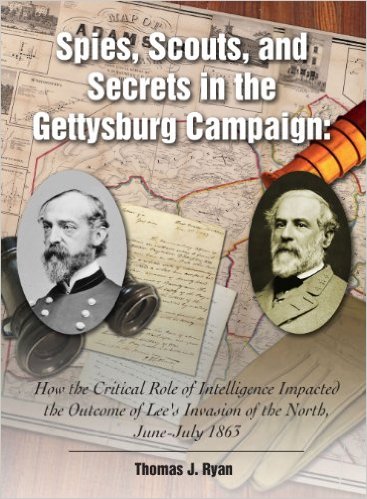The Chickamaugua Campaign: Barren Victory: The Retreat into Chattanooga, the Confederate Pursuit, and the Aftermath of the Battle, September 21 to October 20, 1863 by David A. Powell. Savas Beatie, 2017. Paper, IBSN: 978-1611213843. $22.95.
 Though the literature on the Chickamauga campaign takes up a respectable amount of space on Civil War bookshelves, room remains for useful studies like David A. Powell’s Barren Victory: The Retreat into Chattanooga, the Confederate Pursuit, and the Aftermath of the Battle, September 21 to October 20, 1863. Powell’s volume is a companion to earlier monographs detailing the initial phase of the fighting in South Tennessee and North Georgia and an examination of the bulk of the battle proper: the only major Confederate victory ever achieved in the Western Theater. In this third volume, Powell examines how both the Army of Tennessee and the Army of the Cumberland (and their respective commanders, Braxton Bragg and William S. Rosecrans) responded to the strategic situation following the fighting. Powell also provides several useful statistical appendices.
Though the literature on the Chickamauga campaign takes up a respectable amount of space on Civil War bookshelves, room remains for useful studies like David A. Powell’s Barren Victory: The Retreat into Chattanooga, the Confederate Pursuit, and the Aftermath of the Battle, September 21 to October 20, 1863. Powell’s volume is a companion to earlier monographs detailing the initial phase of the fighting in South Tennessee and North Georgia and an examination of the bulk of the battle proper: the only major Confederate victory ever achieved in the Western Theater. In this third volume, Powell examines how both the Army of Tennessee and the Army of the Cumberland (and their respective commanders, Braxton Bragg and William S. Rosecrans) responded to the strategic situation following the fighting. Powell also provides several useful statistical appendices.
According to Powell, neither Bragg nor Rosecrans had a complete picture of the results of the battle of September 18-20 when the sun rose the morning of September 21 to reveal a battlefield abandoned by the Federal forces. Reconnaissance by the cavalry of Nathan Bedford Forrest and Joseph Wheeler revealed little to Bragg about the position of Union troops, while Rosecrans fretted about the manpower advantage he believed Bragg held, and moved to secure his flanks against a turning movement. Over the next few days, working on intelligence provided by Forrest, Bragg became convinced that the Federals were set to abandon Chattanooga—and that no major Confederate push was necessary to dislodge them from the important South Tennessee railroad junction. Instead, Bragg moved slowly on September 22 and 23, but gained ground on Lookout Mountain and Missionary Ridge—the critical high ground surrounding the city. By the time Bragg realized Rosecrans had no plans to abandon the city, it was too late to mount an attack. After two days of furious work, the supposedly demoralized Union troops had repurposed former Confederate works into a strong defensive line that secured all avenues of advance into Chattanooga.
Powell devotes considerable space to assessing the cost of the battle in terms of men and materiel, as well as the political cost to Union and Confederate war efforts. Following the battle, Powell details, the high commands of both armies were in turmoil. As always, Braxton Bragg’s subordinates looked to blame anyone but themselves for their conduct during the battle, and they added to the mix James Longstreet, who brought his frustrations with Robert E. Lee and the Army of Northern Virginia west with his corps. The days after Chickamauga, however, were perhaps the only days during the war that the Union high command in the West matched the Confederate high command in their fighting and disarray. Less than a month after the battle, Rosecrans was removed from command and replaced by Ulysses S. Grant. Rosecrans never forgave his subordinates or the army high command in Washington for what he believed was a conspiracy to remove him from his position. Powell examines the Rosecrans controversy from all sides in an appendix, including both the battle’s immediate aftermath and the post-war memory of the general’s removal.
Other useful details fill Powell’s volume, including methodical accounting of the strength and losses of each army. A thorough bibliography provides reference materials for readers interested in consulting Powell’s primary sources—or delving deeper into the secondary literature on the battle. Barren Victory is a very readable volume—and Powell’s use of primary sources gives a clear sense of how common soldiers experienced the battle. A section describing the response of the soldiers of the Army of Tennessee to Bragg as he rode out to Kelly Field to survey the scene the morning after the battle gives a sense of the embattled commander’s relationship with his men that softens the image of the irascible general.
While the level of detail may be more than a casual reader is looking for in a campaign study, the density of information Powell offers does not decrease the book’s readability. Detailed work like Powell’s is often done on the armies and campaigns of the Civil War’s Eastern Theater—and it is much to the author’s credit that he has undertaken this study despite the challenges involved in writing about an oft-ignored theater that was populated by some of the war’s most difficult personalities. For readers seeking a reliable reference volume for the Chickamauga campaign, Powell’s study is an excellent place to start. Powell’s efforts to dig below the surface of Chickamauga have produced a thorough and readable examination of the aftermath of a critical Civil War battle.
Cecily Zander is a Ph.D. student in the Department of History at The Pennsylvania State University.




